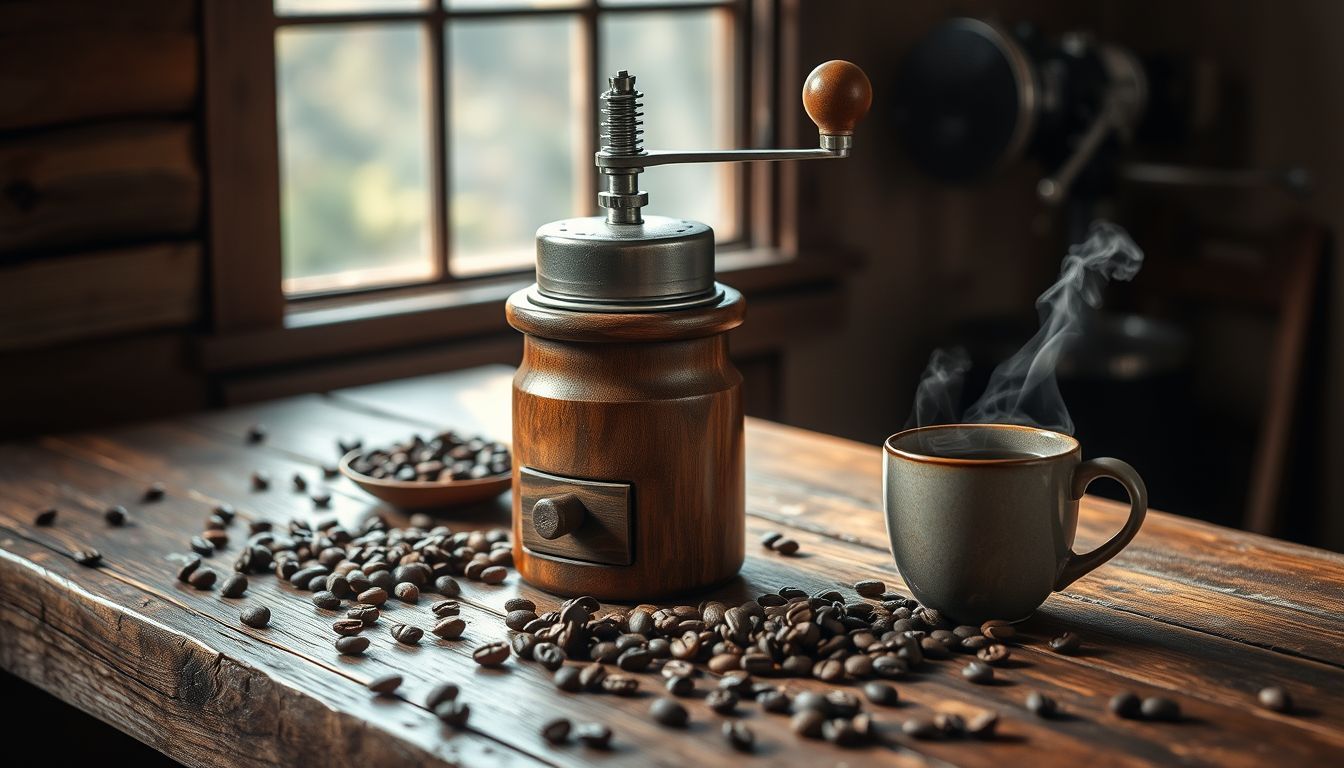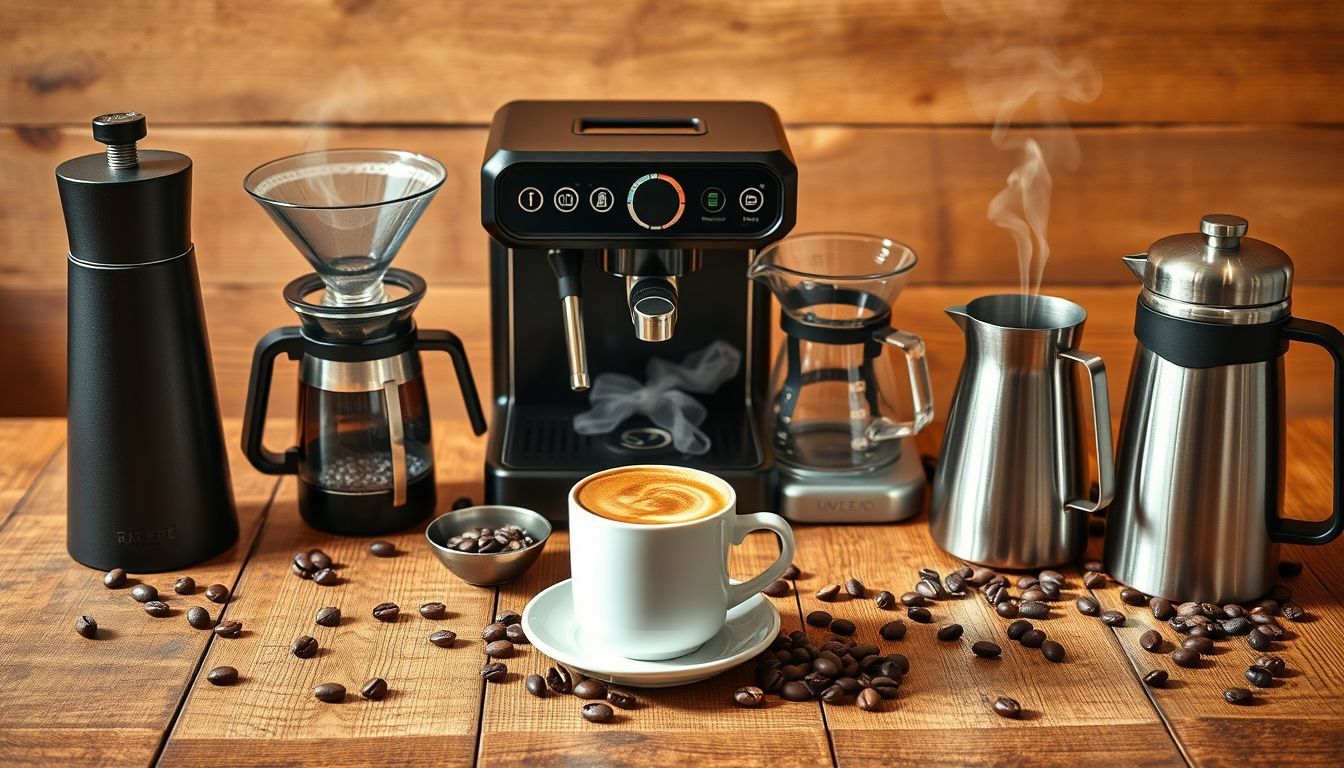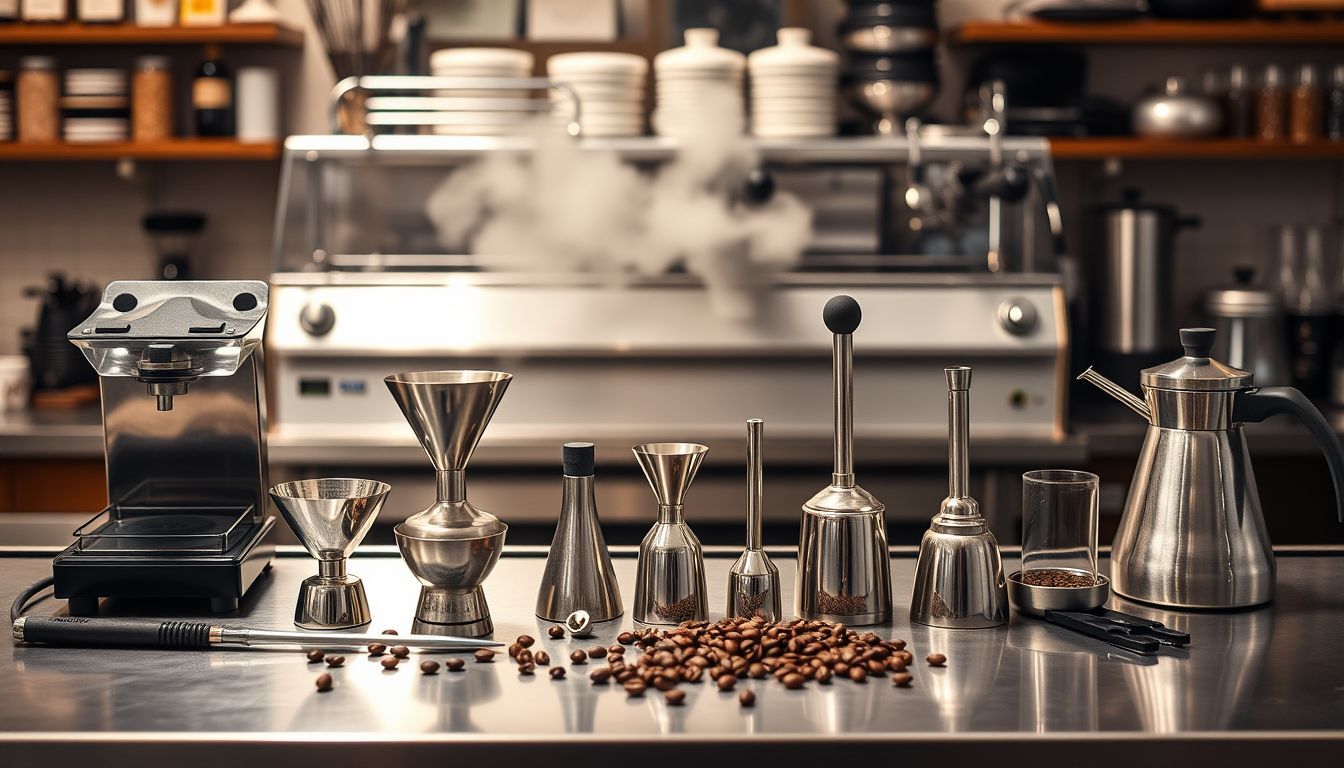Why Hand-Crank Coffee Grinders Are Making a Comeback
In our digital age, the rhythmic meditation of hand-grinding coffee beans connects us to centuries of brewing tradition while delivering unparalleled flavor control.

Amazon Affiliate Disclosure
This post contains affiliate links. If you purchase through these links, we may earn a small commission at no additional cost to you.
Why Hand-Crank Coffee Grinders Are Making a Comeback
There's something almost sacred about the morning ritual of grinding coffee by hand. As I sit here in my kitchen, watching the first light of dawn filter through the window, I can hear the gentle whisper of burrs crushing beans—a sound that has echoed through coffee-growing regions for generations. In our hyperconnected, instant-everything world, the humble hand-crank coffee grinder is experiencing a renaissance that speaks to something deeper than mere nostalgia.
The Poetry of Manual Grinding
When I first encountered hand-crank grinders during my travels through the highlands of Guatemala, I witnessed something profound. Local farmers, whose families had cultivated coffee for generations, approached the grinding process with a reverence that bordered on the spiritual. Each turn of the handle was deliberate, measured—a conversation between human intention and the coffee bean’s potential.
This isn’t just romantic idealization. There’s genuine wisdom embedded in this ancient practice that modern coffee enthusiasts are rediscovering. The hand-crank grinder forces us to slow down, to be present with our coffee in a way that electric grinders simply cannot replicate.
The Mindfulness Factor
In the mountains of Ethiopia, where coffee first captured human imagination, I learned that the grinding process was never meant to be rushed. The elders spoke of how the rhythm of grinding—steady, consistent, unhurried—prepared not just the beans but the grinder’s spirit for the ceremony of brewing.
Today’s coffee lovers are finding that this meditative quality offers a counterbalance to our frenetic digital lives. The 30–60 seconds required to hand-grind beans for a single cup becomes a moment of mindfulness, a brief meditation that transforms the simple act of making coffee into something approaching ceremony.
Superior Grind Consistency: The Technical Renaissance
Beyond the philosophical appeal, hand-crank grinders are making a comeback because they’ve evolved dramatically in terms of engineering and precision. Modern manual grinders rival—and often surpass—electric models costing ten times as much.
Burr Technology Revolution
The heart of any grinder lies in its burrs, and contemporary hand-crank models feature precision-engineered steel or ceramic burrs that would make a commercial roaster envious. Companies like Comandante, 1Zpresso, and Timemore have revolutionized manual grinding with stepped adjustment systems that offer micro-level control over particle size.
During my time working with specialty roasters in Costa Rica, I observed how even small variations in grind consistency could dramatically alter extraction. Hand-crank grinders, operating at low RPMs, generate minimal heat and static, preserving the delicate volatile compounds that give each origin its unique character.
Heat: The Silent Flavor Killer
Electric grinders, particularly blade models but even many burr grinders, generate significant heat through friction. This heat can begin breaking down the aromatic compounds before brewing even begins. Hand-crank grinders, operating slowly and deliberately, maintain the beans’ cellular integrity and preserve the nuanced flavors that distinguish a bright Kenyan AA from a chocolatey Brazilian pulped natural.
Portability and the Nomadic Coffee Culture
As someone who has brewed coffee everywhere from Andean peaks to African savannas, I can attest to the liberation that comes with a truly portable grinding solution. The modern coffee enthusiast—whether a digital nomad, camping enthusiast, or simply someone who refuses to compromise on office coffee—has embraced hand-crank grinders for their ultimate portability.
Travel-Friendly Precision
Unlike their electric counterparts, manual grinders require no power source, produce minimal noise, and pack into the smallest of spaces. I’ve carried my trusty hand grinder through airports across six continents, never once worrying about voltage converters or finding outlets in remote locations. Compact models like the Timemore Chestnut C2 Manual Coffee Grinder (https://amazon.com/dp/B083FSGH45?tag=coffeelogik-20) prioritize portability without sacrificing the precision required for consistent extraction.
This portability has enabled a new generation of coffee adventurers to maintain their brewing standards regardless of location. Whether you’re brewing pour-over at a mountain campsite or preparing espresso in a tiny apartment kitchen, a quality hand-crank grinder ensures consistency.
Environmental Consciousness and Sustainability
The resurgence of manual grinders also reflects a growing environmental awareness within coffee culture. As consumers become more conscious of their ecological footprint, the appeal of a device that requires no electricity, produces no electronic waste, and can last decades with proper care becomes increasingly compelling.
Built to Last Generations
During my visits to coffee farms across Central America, I’ve encountered hand grinders that have been in continuous use for decades. Quality manual grinders, constructed from durable materials like aluminum, steel, and hardwood, represent the antithesis of our throwaway culture.
This longevity isn’t just environmentally responsible—it’s economically sensible. A well-made hand grinder can outlast multiple electric models while requiring minimal maintenance beyond occasional burr cleaning and calibration.
The Ritual and Romance of Slow Coffee
Perhaps most significantly, hand-crank grinders have become symbols of the slow coffee movement—a conscious rejection of the grab-and-go mentality that has dominated coffee culture for too long. This isn’t about elitism or pretension; it’s about reclaiming the inherent pleasure and mindfulness that coffee can offer.
When I grind beans by hand, I’m connected to every step of the coffee’s journey—from the farmer who carefully selected ripe cherries to the miller who processed them with precision. This physical engagement with the coffee creates a deeper appreciation for the complexity and craftsmanship involved in bringing exceptional coffee to our cups.
For those drawn to ritual in every cup, a timeless brewer like the Chemex Pour-Over Glass Coffeemaker (https://amazon.com/dp/B000I1WP7W?tag=coffeelogik-20) elevates the experience, marrying form and function to showcase the clarity of a slow, mindful extraction.
Choosing Your Manual Grinder: A Personal Journey
Not all hand-crank grinders are created equal, and selecting the right one requires understanding your brewing preferences and lifestyle needs.
For the Pour-Over Purist
If your heart belongs to pour-over methods—V60, Chemex, or Kalita Wave—look for grinders with stepped adjustment systems that allow precise control over particle size. Models like the Comandante C40 or 1Zpresso JX-Pro offer the consistency needed for optimal extraction in these brewing methods, and the JavaPresse Manual Stainless Steel Coffee Grinder (https://amazon.com/dp/B013R3Q7B2?tag=coffeelogik-20) seamlessly combines portability with precision.
For the Espresso Enthusiast
Espresso demands the finest grind consistency, and several manual grinders now rival commercial espresso grinders. Though electric machines dominate the market, a disciplined barista can achieve remarkable results with a well-tuned manual mill—celebrate that ritual with every perfectly dialed-in shot.
For the Traveling Coffee Lover
Compact models like the Timemore Chestnut C2 Manual Coffee Grinder (https://amazon.com/dp/B083FSGH45?tag=coffeelogik-20) or a lightweight dripper such as the Bodum 34 Oz Pour Over Coffee Maker (https://amazon.com/dp/B07KQVW6RR?tag=coffeelogik-20) prioritize portability without sacrificing too much grinding quality, making them ideal companions for coffee adventures.
The Future of Manual Grinding
As I reflect on the trajectory of coffee culture, the resurgence of hand-crank grinders represents more than a trend—it’s a return to fundamental values that honor both the craft of coffee and our relationship with it. In an age of increasing automation, choosing to grind by hand is a declaration of intentionality.
The manufacturers continue to innovate, incorporating precision engineering with traditional craftsmanship. We’re seeing improvements in burr geometry, adjustment mechanisms, and ergonomic design that make manual grinding more accessible and enjoyable than ever before.
Embracing the Grind
The comeback of hand-crank coffee grinders isn’t just about nostalgia or contrarianism—it’s about rediscovering the joy inherent in the coffee ritual. In those moments of grinding, we connect with centuries of coffee tradition while creating space for mindfulness in our daily routines.
As the sun rises fully now, casting warm light across my kitchen counter, I’m reminded that the best things in life—like the best coffee—cannot be rushed. The gentle rhythm of hand-grinding serves as a daily reminder that in our pursuit of efficiency, we shouldn’t lose sight of the simple pleasures that make life rich.
Whether you’re drawn to the superior grind consistency, the meditative ritual, the environmental benefits, or simply the romantic notion of connecting with coffee’s heritage, a quality hand-crank grinder offers something that no electric model can: the irreplaceable satisfaction of creating something beautiful with your own hands, one turn at a time.
In the end, the resurgence of manual grinders reflects our collective desire to slow down, to be present, and to honor the remarkable journey that brings coffee from seed to cup. And in that turning of the handle, we find not just better coffee, but a better way of being with coffee.

Ben Carter
I spent the first part of my life learning the language of the wild—the rustle of leaves, the silence of snow, the resilience of a lone tree. In my writing, I try to translate that language, exploring how the landscapes around us shape the landscapes within us. My stories are quiet, but I hope they speak to a deeper part of you.


